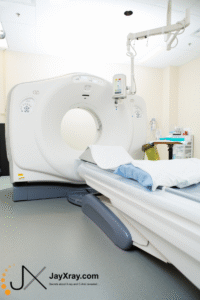As Veterinary professionals, are you weighing the diagnostic benefits of advanced imaging modalities like CT scans against VET MRI systems? Deciphering which technology best suits your patients’ needs and your practice’s capabilities can be complex. As an imaging expert with JayXray, my goal is to offer clear, unbiased information to help you navigate these critical decisions.
Understanding the Core Technologies: CT vs. MRI
Before comparing their applications, it’s helpful to grasp the fundamental differences in how these technologies work. A Computed Tomography (CT) scanner utilizes X-Ray technology to create multiple cross-sectional images of the body, which are then computer-processed to show detailed views of bones, tissues, and organs. It’s particularly adept at imaging dense structures.
An MRI scanner, or Magnetic Resonance Imaging, uses powerful magnetic fields and radio waves. It excites protons within the body and measures the energy released to create highly detailed images. MRI excels at differentiating various types of soft tissues. Neither technology is universally superior—their strengths lie in different areas.
Key Clinical Applications for CT in Veterinary Medicine
 CT scans offer distinct advantages in several Veterinary diagnostic scenarios. CT is exceptionally good for imaging bone, making it invaluable for assessing complex fractures, bone tumors, or joint diseases. It’s also helpful in examining the lungs and chest, providing clear images of lung tissue and identifying nodules or masses.
CT scans offer distinct advantages in several Veterinary diagnostic scenarios. CT is exceptionally good for imaging bone, making it invaluable for assessing complex fractures, bone tumors, or joint diseases. It’s also helpful in examining the lungs and chest, providing clear images of lung tissue and identifying nodules or masses.
Due to its relatively fast acquisition times, CT is often the modality of choice in emergencies where quick diagnostics are critical for trauma patients. It can also play a role in cancer staging for certain types of malignancies.
When is a VET MRI the Preferred Imaging Choice?
When should you consider a VET MRI for your patients? This technology truly shines when detailed visualization of soft tissues is paramount. If you suspect neurological disease, an MRI is often the gold standard.
It provides unparalleled brain and spinal cord views, essential for diagnosing conditions like tumors, inflammation, or intervertebral disc disease. A VET MRI is also highly effective for evaluating complex joint issues involving ligaments, tendons, cartilage, and soft tissue sarcomas.
Consider a VET MRI for suspected:
- Neurological conditions such as brain tumors, seizures, or spinal cord injuries.
- Detailed assessment and staging of soft tissue sarcomas or other complex masses.
- Injuries to joints, particularly involving menisci, ligaments, or tendons.
- Subtle muscle tears or other soft tissue abnormalities are not clearly seen with other modalities.
Practical Considerations: Beyond Image Quality
Choosing between CT and VET MRI involves more than just their diagnostic capabilities. Scan times are a significant factor; MRI scans typically take longer than CT scans, which can influence anesthesia time and patient throughput. The initial investment and ongoing operational costs for MRI systems are also generally higher.
Similarly, MRI units often have more demanding site requirements due to their powerful magnets. As an imaging consultant at JayXray with over 15 years of experience, I frequently discuss these practicalities to help practices make informed decisions that align with their resources and goals.
Making the Right Choice for Your Patients and Practice
Ultimately, the decision to use CT, VET MRI, or another imaging modality depends on the specific clinical question you’re trying to answer. The patient’s condition and the type of information needed will guide your choice. Sometimes, these technologies can be complementary, each providing unique pieces of the diagnostic puzzle.
Through resources like JayXray.com, I aim to provide honest opinions and objective information, helping you select the equipment that empowers you to provide the highest level of care.
Understanding the nuances between CT and VET MRI is vital for any Veterinary practice offering advanced diagnostics. For personalized, complimentary advice on your specific imaging questions or equipment considerations, feel free to contact me via JayXray.com. I’m here to share my knowledge.


